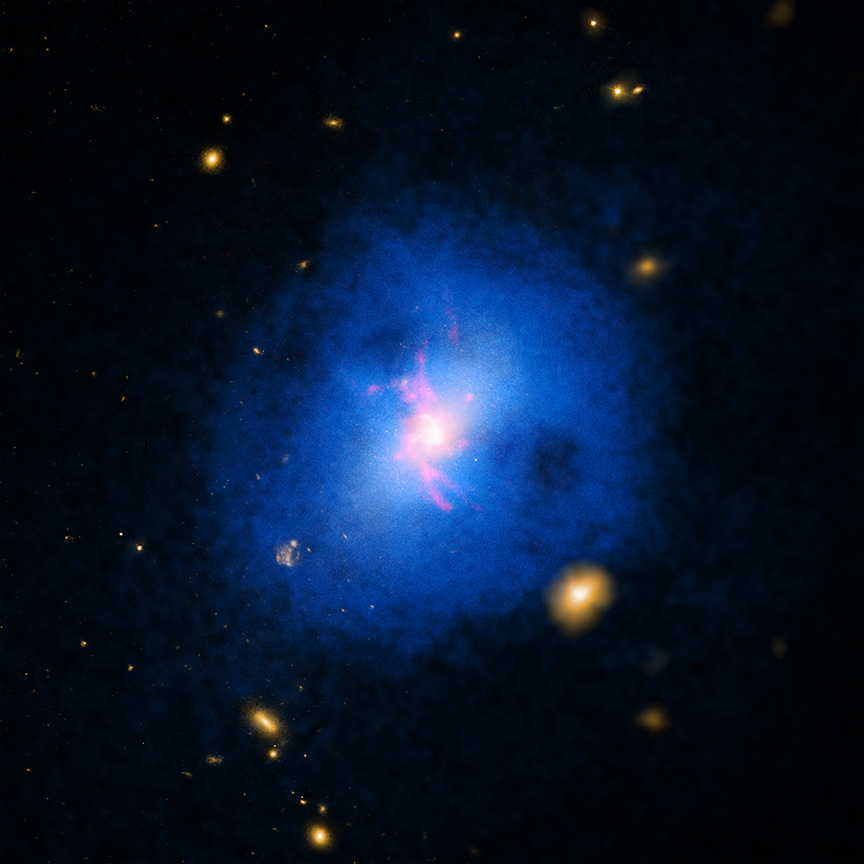

The image above might look like something you’d find in the Messier catalog—a nebula, or something to that effect—but in reality, you are looking at a large galaxy cluster situated about 1 billion light-years from Earth (not too far, per traditional standards, anyway).
Called Abell 2597, it gets its spectacular glow not from HII regions, but from multimillion degree gas clouds. Adding an extra layer of beauty are the two huge dark cavities forged within the glowing gas. One of which, can be found above and to the left of the main formation, while the second lurks below and to the right.
Astronomers estimate that the cavities span around 60,000 light-years across, and as incredulous as it may seem, the massive holes are artifacts of a 100-million-year old black hole outburst. Whereby the supermassive black hole in the very center of the cluster erupted, flinging raw, superheated material into the medium surrounding members of Abell 2597.
Speaking of the medium, it’s important to note that it—specifically the parts within the cavities themselves—aren’t empty. Rather, it’s pervaded by gas and other forms of high-energy radiation, which make it very bright at x-ray wavelengths.
New research, carried out by Michigan State University, has shed light on the mechanism preventing Abell 2597—and other galaxy clusters like it—from producing as many new stars as it should.
This galaxy cluster comes from a sample of over 200 that were studied to determine how giant black holes at their centers affect the growth and evolution of their host galaxy, as reported in our latest press release. This study revealed that an unusual form of cosmic precipitation enables a feedback loop of cooling and heating, stifling star formation in the middle of these galaxy clusters.
According to this new study, the regulation of the largest black hole and their host galaxies works as follows: in some galaxies, such as NGC 2597, hot gas is able to quickly cool through radiation and energy loss, in a process called precipitation. The clouds of cool gas that result then fall into the central supermassive black hole, producing jets that heat the gas and prevent further cooling.
[Reference: NASA]